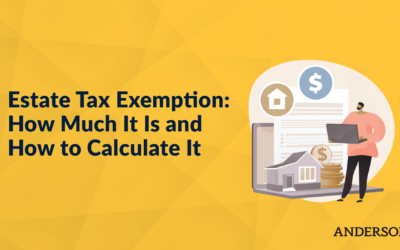Updated March 9, 2021
What is a qualified retirement plan and why is it important? These retirement plans meet certain requirements set out by the Internal Revenue Code and are regulated by federal laws. There are several qualified plans available that provide benefits to both employers and employees.
10 Types of Qualified Retirement Plans
- 401(k)
- 403(b)
- Money Purchase Plans
- Profit-Sharing Plans
- Stock Bonus Plan
- Employee Stock Purchase Plan (ESPP)
- Employee Stock Ownership Plan (ESOP)
- Savings Incentive Match Plan for Employees (SIMPLE)
- Simplified Employee Pension Plan (SEP) Individual Retirement Agreement (IRA) or SEP-IRA
- Keogh or HR-10 Plans
What Is a Qualified Retirement Plan?
A qualified retirement plan can be any benefit plan that meets the requirements set forth in the Internal Revenue Code Section 401(a). This leaves a great deal of freedom in the creation of retirement plans for the benefit of employees and those who are self-employed. Many employers set up a qualified retirement account and invite their employees to participate. Depending on the plan, the company, employee, or both may contribute to the retirement account. Employees are able to save for retirement while taking advantage of certain tax benefits.
The employer can also take advantage of tax benefits, which are designed to encourage individuals to invest in their retirement. Social Security income can be supplemented by funding your own retirement through carefully calculated and tax-efficient investing practices. Qualified plans are limited by tax code and regulations which must be closely followed. These include minimum participation requirements, non-discriminatory distributions, and minimum withdrawal requirements based on the individual’s age. Employer contributions to employee retirement accounts can take many forms, as long as the language of the plan document and the operation of the benefit plan meet the IRC requirements and comply with federal law.
A non-qualified retirement plan can also take many forms. These do not qualify for the same tax benefits as qualified plans, but they can still be beneficial. While the Internal Revenue Code (IRC) calls it an individual retirement account (IRA), it is often referred to as an individual retirement agreement. Generally, an IRA is not a qualified plan, but there are exemptions—such as the SEP-IRA and SIMPLE IRA. Even if a retirement plan is not a qualified plan, it may still be possible to take advantage of similar tax benefits. A traditional IRA is a savings plan that allows an individual to make tax free investments for retirement and take advantage of tax deductions on income taxes. Taxes are applied on distribution but grow tax-free.
Defined Benefit Plans
The flexibility of IRC Section 401(a) allows for many different types of qualified retirement plans. These qualified plans are generally offered through employers. They can also be established by some individuals who are self-employed. Employers determine whether to offer a defined benefit plan or a defined contribution plan.
Defined benefit plans are less common since there are some drawbacks. In defined benefit plans, such as a pension, the company agrees to pay out a specified amount to the participant after certain conditions have been met. Typically, this is a defined annual amount paid out monthly. Some plans base the rate of pay on the highest salary and may add a modifier for time in service. Establishing a defined benefit plan requires the company to set aside money and manage a fund designed to pay out these benefits at the necessary time. Defined benefit plans place most of the burden on the employer to provide the benefit according to the retirement plan agreement.
Employees have little to no control over the plan’s investments. Due to the failure of some companies to adequately fund their pension or defined benefit plan, government intervention resulted in the Employee Retirement Income Security Act of 1974 (ERISA). This act also led to the creation of the federally chartered Pension Benefit Guaranty Corporation (PBGC). If a company fails and cannot provide benefits as expected, even with financial assistance, PBGC may step in by taking over the retirement account. PBGC also collects insurance premiums from employers and manages a fund for making promised monthly payments up to a maximum guaranteed amount.
Defined Contribution Plans
Unlike defined benefit plans, contribution plans allow an employer to establish individual accounts for eligible participants. The company can then distribute a defined amount to each account. In many cases, the employee may also make contributions to the account. There are limits on how much can be contributed by both the employer and employee. Defined contribution plans include the popular 401(k) and the lesser known 403(b). Due to the freedom afforded by the IRC, there are many different kinds of defined contribution plans, such as money or stock purchase plans, profit sharing, or an employee stock ownership plan (ESOP).
A 401(k) is a qualified retirement account that allows both an employer and employee to contribute up to yearly maximums into the account. Employees can agree to elective deferrals, in which the employer makes a contribution from the employee’s income. Many employers include a matching program, such that the company will match what the employee contributes. Taking advantage of matching contributions and tax-free growth is a solid practice. You may want to contribute as much as you can, up to what the company will match and perhaps even up to the maximum annual contribution limit. After reaching the contribution limit, you can still take advantage of tax-deferred investing, which employers may be able to contribute to as well as part of a defined contribution plan.
Those interested in creating their own qualified retirement plan have several options. It’s a good idea to seek professional assistance when creating, managing, and maximizing your retirement accounts. Changes to federal tax law can impact plan requirements, which necessitates making frequent updates to the plan. For the self-employed workers, entrepreneurs, and independent contractors who do not have the time necessary to research complex tax laws, you can benefit greatly from expert advice from knowledgeable and experienced tax attorneys like those at Anderson Advisors.
Qualified retirement plans are all about taking advantage of favorable tax laws and saving for retirement. While it may not be pleasant to talk about, end of life planning is equally important to ensure your hard-earned retirement accounts are not overly taxed by federal, state, and local governments after your passing. Improper planning can effectively erase all of the tax savings earned through a qualified retirement plan. Well-designed and executed estate planning can maximize the inheritance you pass to your descendants. You can also take more control over how your assets are handled in various situations.
Requirements of a Qualified Retirement Plan
Qualified retirement plans must meet the Internal Revenue Code Section 401(a) requirements. These requirements can be complex, but they are designed to provide many options. Some basic requirements start with minimum age and service requirements. Employees over 21 years of age cannot be excluded once they meet service requirements. This is usually one year of employment but can be two in some cases. These eligibility periods can be defined by either length of time or by hour count, though an eligibility period cannot exceed 1,000 hours within a given year.
The tax code also specifies details such as when employees can become eligible and claim participation rights. Qualified plans must operate as the plan is written and offer participation to eligible employees. Many requirements are set up to protect employees from unfair compensation practices. This includes preventing an employer from cutting a benefit that reduces the employee’s compensation under the plan. Also, highly compensated employees cannot receive preferential treatment under the plan. For example, the Actual Deferral Percentage (ADP) is a test used to see if a Cash or Deferral Arrangement (CODA) under a 401(k) is favoring the higher paid employees. Some plans, such as a 401(k), have additional requirements in order to become a qualified plan.
There are many contribution limits that must be followed. For example, elective deferrals like those found in 401(k), 403(b), and SIMPLE IRAs are limited to $19,000 in 2019 and is subject to change. Deferral limits for a SIMPLE 401(k) in 2019 is $13,000. Those who started saving later or want to take advantage of more savings can make catch-up contributions. Guidelines for these special contributions allow an additional $3,000 to $6,000, depending on the plan. Total annual contributions cannot exceed $56,000 in 2019. Compensation limits are set at $280,000 in 2019. Exceeding annual contribution limits can lead to double taxation for excess amounts, so you need to be careful to stay below the threshold. You can take distributions to remove the excess before the deadline. Also, those who have multiple retirement accounts should be aware that contributions to some accounts, like a 401(k), may lower contribution limits for other accounts.
It’s important to pay attention to a plan’s retirement age requirements and the penalties for early withdrawals. Once you reach 59 1/2 years of age, you can take distributions from a qualified retirement plan without the additional 10% penalty on early withdrawals. There are exceptions to this and some—especially those in public service—may be able to retire earlier. Pension plans can start paying out to participants over 62 years old, even if they are still working. Most defined benefit plans calculate benefits starting from age 65. At age 70 1/2, many people are required to take minimum distributions, although some qualified plans allow participants to request a delay.
This is a complex subject and one that can determine the outcome of your retirement. The growing popularity of grassroots movements, such as “Financial Independence, Retire Early” (FIRE), has seen many individuals leaving the workforce early after cutting costs and saving aggressively. There are dangers to early retirement, however. Early withdrawals of retirement plan funds are taxed as ordinary income on top of the penalty. Also, to qualify for maximum Social Security benefits in retirement, one must earn enough work credits throughout their lifetime. People who retire early may not have earned enough work credits. Fortunately, there are ways to safely and efficiently plan for early retirement. Consult with a tax lawyer for help optimizing a tax plan tailored to your unique situation.
What Are the Benefits of a Qualified Retirement Plan?
The main benefit of using a qualified retirement plan is to take advantage of tax-deferred growth. There are many other benefits as well—for both employees and employers.
Benefits to Employees
Qualified retirement plans offer many ways for employees and other covered individuals to save for retirement through special tax treatment on investments. The range of options available gives employees flexibility when it comes to choosing how to invest in retirement. An employee can maximize contributions in a qualified defined contribution retirement account through an employer, as well as contribute to other retirement plans, such as a traditional or Roth IRA. If an employer sets up a defined benefit plan, which is an employer-sponsored retirement plan, this can save an employee the time and trouble of managing a complex account. Some qualified retirement plans allow plan participants to choose and manage their investments personally.
Be aware that setting up and operating a retirement account, let alone an IRS qualified retirement account, can come with costs. These costs scale with employee participation and the impact of the investments in the retirement accounts. Most of the burden is on the employer to provide the funds in a defined benefit plan, like a pension, which pays out an annuity in retirement.
Employees can also tap into some of the lesser known benefits of qualified retirement plans. For example, employees can borrow from their retirement account without penalty, in some cases. A loan against your plan must be paid back with interest, which essentially allows you to contribute more towards your retirement account, as well. There are waivers for hardships when withdrawing funds for certain situations, which can also help avoid penalties. Savvy tax lawyers may also be able to help you fund a start-up business using a retirement account, depending on the situation.
Benefits to Employers
Employers can elect to make voluntary contributions to a retirement plan for employees. Creating and operating a retirement plan can be complex but there are many companies that offer retirement plan management services.
There are certain options that can help employers cut costs by placing the burden of contributions on employees. Matching is not required, and with these plans, it is the employees’ responsibility to contribute to the retirement account. The maximum age and service limits on plan participation help employers exclude temporary employees from raising costs. Plan participants must become vested, usually through an extended period of employment, which then gives them a right to the invested retirement fund.
Employers can pass profit to employees and build loyalty through a variety of methods, such as sharing ownership through stock purchase plans. Profit-sharing plans or stock bonus plans can also be used to entice quality associates from other companies or help retain key employees. Although qualified retirement plans require employers not to discriminate in favor of highly compensated employees, separate non-qualified plans can be set up to help motivate and compensate certain employees, even highly compensated ones. When an employer sets up a qualified defined-contribution plan to use the individual employee’s retirement account, the employee can then take that account or transfer the funds while retaining the tax benefits.
Who Can Set Up a Qualified Retirement Plan?
Employers, self-employed workers, and individuals can all set up a qualified retirement plan. However, it generally requires a financial institution, such as a broker or bank, to set up the account and you may want the help from a tax professional. Self-employed individuals can range from independent contractors to sole proprietors. Partners and LLCs that are disregarded entities can also establish qualified plans. Even governments, schools, and non-profit corporations can create benefit plans for employees through 403(b) plans and other compensation methods or salary deferrals. Individuals can also benefit from qualified plans, in some cases. For example, plans can be written where the cash balance of accrued benefits in a retirement account for an employee will be given to a surviving spouse, such as through a survivor annuity.
Establishing a qualified retirement plan allows employers to take advantage of tax savings and other benefits. However, setting up and managing a retirement account, or multiple retirement accounts for individuals, can quickly become complex and hard to manage. There are many laws and regulations that can impact your decisions. Having an experienced tax attorney on your side will help you quickly navigate the process successfully.
Qualified Retirement Plans
Qualified plans are retirement accounts for investments that adhere to the Internal Revenue Code Section 401(a) and ERISA the Employee Retirement Income Security Act, among other federal and state regulations. Due to the flexibility of Section 401(a), there are many different ways to set up retirement accounts, each with their own benefits. Qualified retirement plans offer tax benefits, such as tax-deferred or pre-tax investing. This allows more of your money to compound each time, which can add to significant savings over time. Qualified plans also grow tax-exempt, offering an even greater advantage. Some retirement accounts are taxed when you withdraw funds. Other accounts may be taxed when you make the initial investment, but grow tax-free. They can also be distributed without tax or being considered as income.
There are many different types of qualified retirement plans, such as a 401(k), 403(b), money purchase plans, and employee stock purchase plans. Most of these compensation plans are considered elective since the company voluntarily offers them. These companies can benefit from tax advantages as well as from income tax deductions.
Determining the best retirement plan depends on many factors. Self-employed or small business owners may want a SIMPLE setup or prefer profit sharing for members. Highly paid self-employed individuals may want to consider a Keogh, or what the IRS refers to as an HR-10 plan. There are many options available, depending on the needs of the business and individuals who wish to participate. Qualified plans have many regulations and limits. Generally, an individual must be over 21 and meet employment requirements to be able to participate. There are contributions and deferral limits, as well as benefits limits. Funds are penalized if they are withdrawn early, although one may take a plan loan, in some cases.
Employers can create qualified retirement plans as a way to offer additional compensation to their employees. Some plans, like employee stock ownership plans, can encourage employee participation and a sense of ownership. Employers commonly offer defined contribution plans, which are individual accounts set up for participants in which both the employer and employee can contribute up to the annual limits.
Some defined benefit plans are employer-sponsored retirement plans, such as a pension plan. Plans must not discriminate in favor of highly compensated employees to remain qualified. While defined benefit plans are not as common, they do have uses. These can provide an annual benefit as set forth in the plan document.
Qualified plans offer many benefits for both employers and employees. Retirement plans are a complicated subject, requiring knowledge and understanding of many regulations and laws. If you are interested in setting up a retirement plan or would like to learn more about qualified plans, contact Anderson Advisors today.
As always, take advantage of our free educational content and every other Tuesday we have Toby’s Tax Tuesday, a great educational series. Our Structure Implementation Series answers your questions about how to structure your business entities to protect you and your assets.
Additional Resources:
- Claim your FREE Strategy Session
- Join our next Tax & Asset Protection event to learn more advanced tax minimization & entity structuring strategies
- For all things investing, check out the Infinity Investing YouTube channel
- Subscribe to our YouTube channel to make sure you never miss the latest strategies & updates
3 Steps to Create an Invisible Investor Strategy















